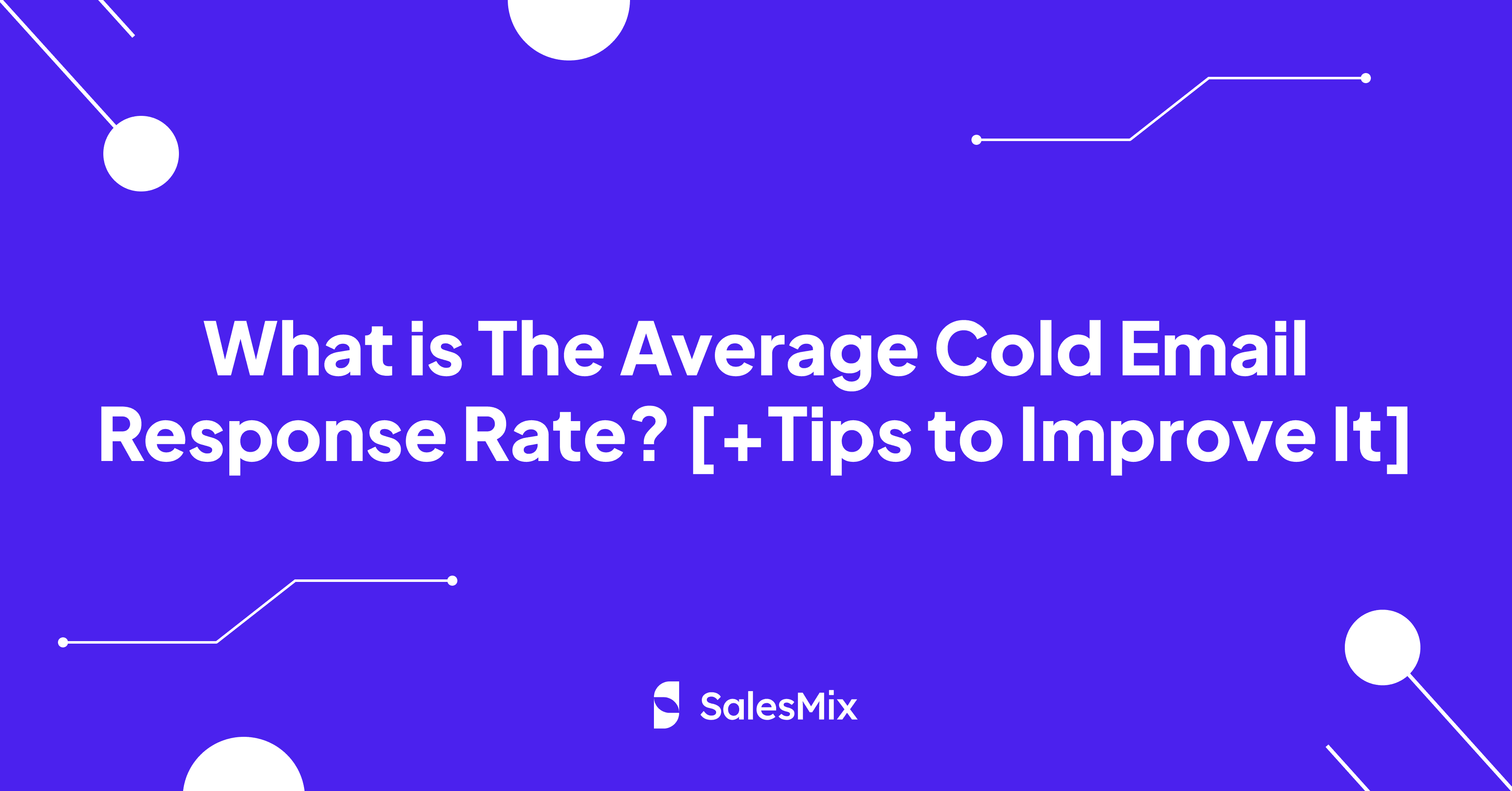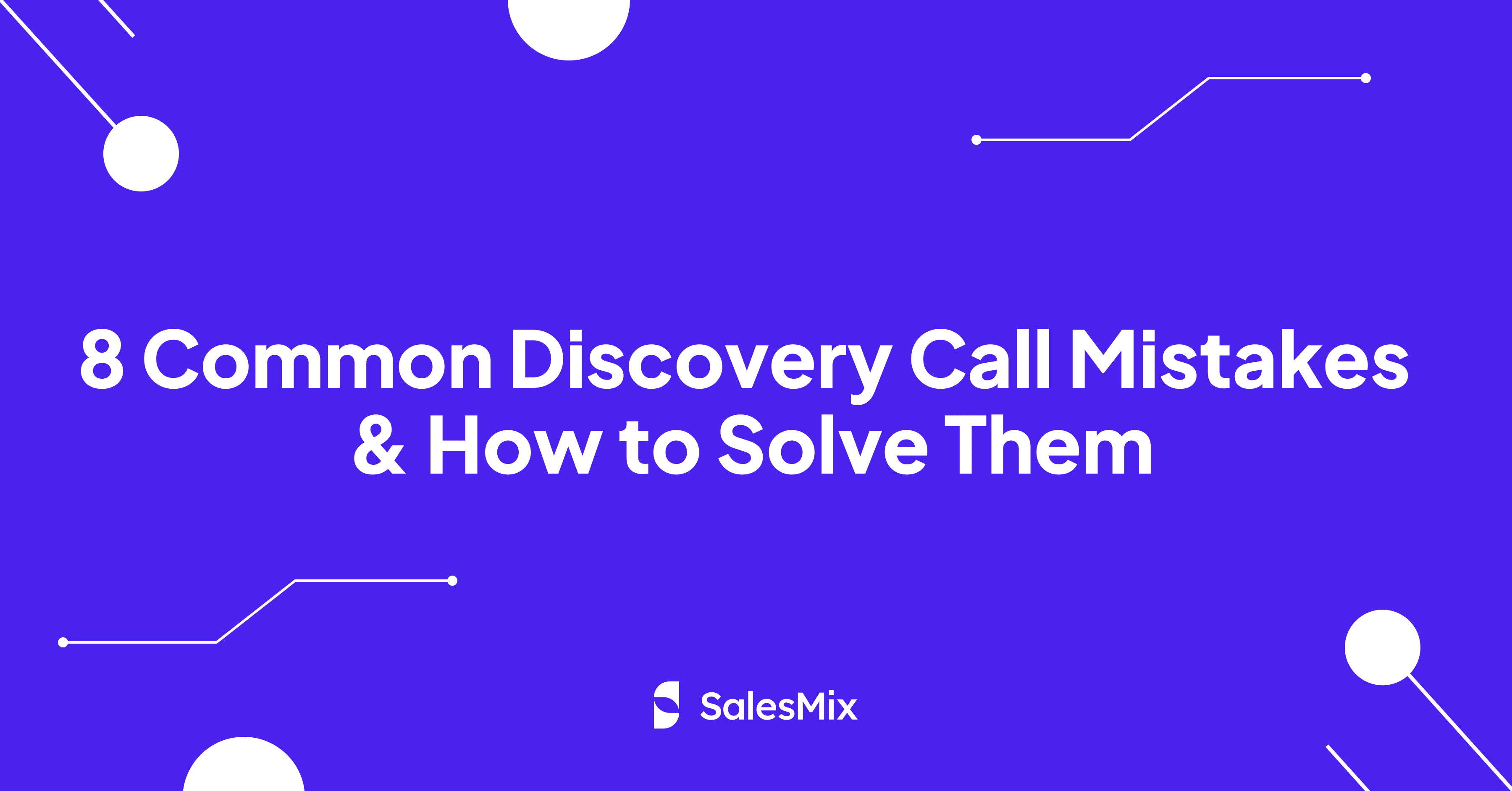Table Of Contents
Wondering if your cold email response rate is up to mark or not?
Understanding the cold email response rate can illuminate how well your cold emails are performing in the vast, competitive world of email marketing. But what exactly constitutes a good response rate, and how can you know if yours is on par?
We will exactly find the answer to this question in this article. Let’s start!
What is A Cold Email Response Rate?
A cold email response rate is the percentage of recipients who reply to a cold email campaign. This metric is crucial for evaluating the effectiveness of your outreach efforts.
Why is The Cold Email Response Rate Important?
Understanding the cold email response rate is crucial for any marketer looking to refine their strategies for cold outreach campaigns. This metric goes beyond just counting replies; it offers deep insights into various aspects of your email campaigns.
Measure of Campaign Effectiveness
The cold email response rate serves as a primary indicator of how effective your email campaign is. When recipients respond to your emails, it shows that your message has successfully captured their interest.
Insight into Targeting Accuracy
Accurate targeting is crucial in cold email marketing, and your response rate can reveal how well you’ve identified and reached your target audience. High response rates typically indicate that you’ve successfully targeted recipients who are interested in what you’re offering.
Indicator of Message Relevance
A strong cold email response rate indicates that your message is relevant to the recipients. Relevance is key to engaging potential customers and fostering communication. If your response rate is low, it suggests that the content of your emails is not appealing or pertinent to the recipients’ needs or interests. It can happen due to generic messaging, lack of personalization, or failure to address the recipients’ pain points.
Benchmark for Future Cold Email Campaigns
Monitoring your cold email response rates over time provides a valuable benchmark for future campaigns. By comparing response rates from different campaigns, you can identify trends and patterns that provide valuable insights about your email marketing strategy. If you notice that certain types of messages or subject lines consistently yield higher response rates, you can use this data to refine and improve future campaigns.
Impact on Marketing ROI
The response rate of your cold emails directly impacts your marketing return on investment (ROI). High response rates generally lead to more conversions, whether that means setting up meetings, converting customers, or gaining new leads. On the other hand, poor response rates may signal that your strategy needs adjustment to ensure a more effective use of your resources to generate the desired outcomes.
How to Calculate Cold Email Response Rates
The formula for calculating the cold email response rate is relatively straightforward: divide the number of responses received by the number of emails sent and then multiply by 100 to express it as a percentage.
For example, if a SaaS provider specializing in project management tools sends out 1,000 cold emails to potential business clients and receives 50 responses, their response rate would be {(50/1000)*100%} or 5%.
What is The Average Response Rate in Cold Emails?
The average response rate falls between 7% and 8.5%. This statistic means that for every 1,000 cold emails sent, you can expect to receive between 70 to 85 responses.
Achieving or exceeding this average is often a sign of a strong cold email strategy. If your response rates are consistently below this average, it may be time to revisit your approach and examine the various aspects of your strategy.
What are The Good Cold Email Response Rates in Various Intrustries?
Cold email response rates can vary significantly across different industries, reflecting the unique dynamics and audience engagement levels characteristic of each sector.
In industries such as museums and institutions, response rates are notably higher, averaging around 17%. It could be attributed to the community-oriented nature of these organizations and the personal connection individuals feel toward cultural or educational causes.
Professional services like architecture, planning, professional training, and coaching see slightly lower, but still decent, response rates of around 9%.
However, as we look towards more specialized or saturated markets such as big data & AI, e-commerce, IT services, and technology sectors, the response rates tend to dip significantly, usually hovering around 4% or even lower at 3%. These industries are highly competitive, with recipients often facing a deluge of similar outreach efforts, making it harder for individual emails to stand out.
The lowest response rates are often seen in highly specialized or competitive fields such as business consulting, IT security, and software, sometimes as low as 2% to 3%. In these industries, personalized messaging that clearly differentiates the sender’s value proposition is crucial to improving engagement.
How Does Follow-Up Impact Response Rates?
Data reveals that response rates can increase dramatically after the first follow-up. Specifically, while your initial email might garner responses at a baseline rate, adding well-timed follow-up emails can boost reply rates.
However, the art of following up requires a careful balance to avoid diminishing returns. While the first follow-up can lead to an impressive 220% increase in replies, subsequent follow-ups often yield diminishing results. For instance, the second follow-up, technically the third email in the series, only provides a modest 9% increase in response rates.
8 Proven Ways to Improve Your Cold Email Response Rates
Let’s go through some of the most effective approaches that can help improve the response rates of your cold email campaigns.
1. Pick the Right ICP as Your Target Audience
Achieving a higher response rate in cold email campaigns begins with identifying and understanding your Ideal Customer Profile (ICP). An ICP is a detailed description of a company or individual that would reap the most benefit from your product or service.
You can tailor your emails to meet the specific needs and pain points of your target audience by clearly defining who your ICP is. You can start by gathering data on your current customer base to identify common characteristics and trends that contribute to successful sales.
You can then create an ideal buyer persona by examining various patterns. For instance, if your service is a sophisticated tool for digital marketing agencies, your ICP might be mid to large-sized agencies that rely heavily on data analytics.
Once you have a well-defined ICP, use this persona to guide your prospecting efforts. It directs the time and resources you spend toward the highest potential for conversion.
2. Warm Up Your Emails Properly
Warming up your email account before launching a cold email campaign is a critical step that is often overlooked but can dramatically improve your email deliverability and response rates. You should take this process as building a reputation with email providers before the cold calls by gradually increasing the volume of emails from your new account.
You should start by sending a few emails per day to contacts who are likely to engage with your email, such as colleagues, friends, or existing clients who recognize your name. These recipients are more likely to open, read, and respond to your emails, which positively impacts your sender reputation.
You can gradually increase the number of emails over several weeks, scaling up your efforts as you begin to see positive engagement, like opens, replies, click-through rates, etc. However, you should always keep your emails’ content genuine and engaging, no matter how much you increase cold email volume.
3. Set Up Your Email Authentication
Email authentication boosts your email deliverability by reducing the likelihood of your emails being marked as spam and building trust with your recipients. It involves key authentication protocols, such as SPF (Sender Policy Framework), DKIM (DomainKeys Identified Mail), and DMARC (Domain-based Message Authentication, Reporting & Conformance).
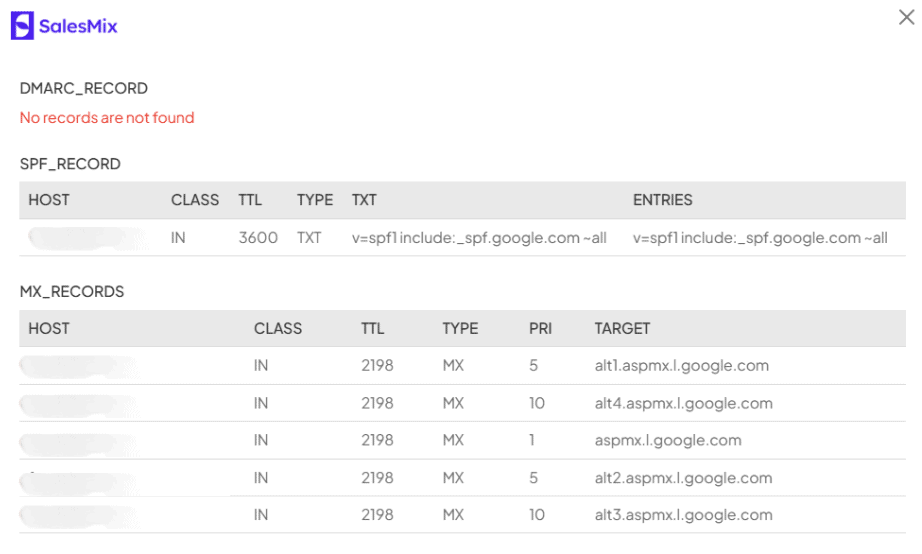
Email authentication in SalesMix
SPF allows you to specify which mail servers are permitted to send email on behalf of your domain. It helps prevent spammers from sending messages with forged From addresses at your domain.
DKIM adds a digital signature to every email you send, which is verified against a public cryptographic key in your domain’s DNS. This verification process helps receiving mail servers confirm that the email was indeed from your domain and that it hasn’t been tampered with.
DMARC builds upon SPF and DKIM records by providing additional instructions to receiving mail servers on how to handle emails that fail SPF and DKIM checks. By setting up a DMARC policy, you help ensure that only emails that fully authenticate as originating from your domain are delivered to inboxes.
4. Make Your Subject Line Persuading
Crafting a persuasive subject line is pivotal in cold email marketing, as it often determines whether an email’s luck – opened or ignored.
You should keep your subject line concise and to the point. Cold email subject lines that are short and sweet tend to perform better. Ideally, you have to aim for 50 characters or less. This approach forces you to refine your message to its most compelling part, which can help catch the eye of your recipients quickly.

Write Compelling Subject Lines
Subject lines that pose a question imply an intriguing premise or invoke curiosity or urgency without resorting to clickbait tactics can be highly effective. However, the content of the email must deliver on the promise of the personalized subject lines and isn’t just another spam.
5. Personalize Your Cold Emails
Personalizing your cold emails can significantly enhance your response rates. It happened because of the connection and increased engagement that stems from you showing a genuine understanding of the recipient’s needs and interests.
You can start by thoroughly researching your recipient. Understand their business role, recent accomplishments, and the challenges they face in their industry. This knowledge allows you to craft a message that resonates with them and show that you have a vested interest in providing value, not just in making a sale.
For example, suppose you’re emailing a marketing director. In that case, you might mention a recent campaign they ran that you found impressive or discuss a trend in their industry that could affect their marketing strategy.
Another aspect of personalization is tailoring the solution you offer to meet their specific needs. Instead of a generic pitch, explain how your product or service can solve a problem they currently face or enhance their existing processes.
6. Avoid The Spam Folder By Not Triggering Filters
One of the first steps in avoiding spam filters is to ensure that your email does not contain elements commonly associated with spam. It includes avoiding all caps, excessive exclamation points, and overly promotional language such as “Buy now!” or “Free!”
Try to avoid excess attachments or link shorteners in your email content. Email spam filters are becoming increasingly sophisticated, and they use these commonly used tactics by spammers to judge whether an email might be spam.
You should also be cautious with your sending frequency. Bombarding recipients with too many emails in a short time can trigger spam filters, with annoyed recipients marking you as spam.
You also need to maintain clean email lists by regularly updating them and always including a clear, easy-to-use unsubscribe link to maintain a good sender reputation. Using reliable email service providers (ESPs) that are known for high deliverability rates can also help in avoiding various sophisticated spam filters.
7. Pinpoint Your Email Timing For Better Opportunities
The right timing can be the difference between an email that is opened and engaged with and one that is overlooked or lost in the shuffle of a busy inbox. Understanding the best times to send out emails based on data and recipient behavior patterns can significantly increase your chances of getting a response.
Sending emails early in the day, typically around mid-morning, can catch recipients as they are settling into their workday and checking their emails. However, the most important thing here is to consider the specific habits and time zones of your target audience. If you are dealing with international clients, make sure to adjust your send times to match their local business hours.
You can also test different sending times for a segment of your audience to see what works best. A/B testing can be invaluable here, as you have to send the same email at different times or days to different groups and then analyze which timing gets the best open and response rates.
8. Put a Compelling CTA in Your Cold Emails
The first step in creating an effective CTA is to ensure it is clear and specific. Vague or generic requests like “Let’s connect” or “Get in touch” do not provide enough direction or motivation.
Instead, you should be explicit about what you want the recipient to do and why it benefits them. For example, “Schedule a 15-minute call to discuss how we can increase your sales by 20%” gives a clear action and a tangible benefit.
It’s also important to make your CTA action-oriented. Using strong, direct verbs can drive the recipient to take immediate action. Phrases like “Sign up for the webinar” or “Book your free demo” are specific and prompt the recipient to act. This type of language conveys urgency and importance to nudge the recipient towards making a decision.
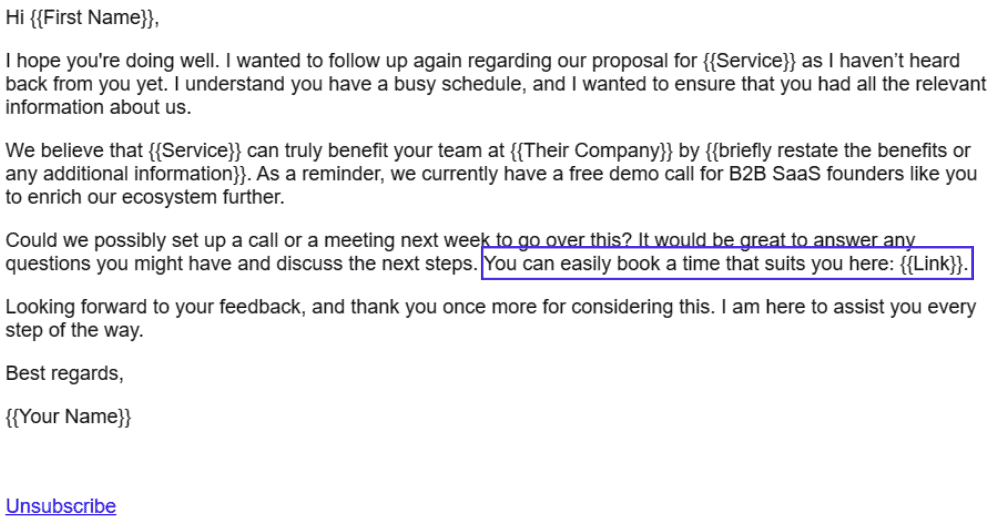
Place the CTA for effective response.
SalesMix: The Most Hassle-Free Way to Boost Your Cold Email Response Rates
SalesMix offers an integrated solution that addresses common hurdles in your cold outreach efforts to increase response rates.
One of SalesMix’s standout features is its robust email warmup service. This service is designed to prevent emails from ending up in the spam folder. The process is highly automated and supports all major email providers. With just one click, you can initiate an unlimited warmup sequence that progressively builds your reputation by ensuring your emails systematically move out of spam.

Automated Email Warmup in SalesMix
It also comes with detailed analytics that help you understand your email performance, enhancing your ability to reach more inboxes effectively and affordably. You can see your cold email response rates with its automatic calculation and display on the dashboard.
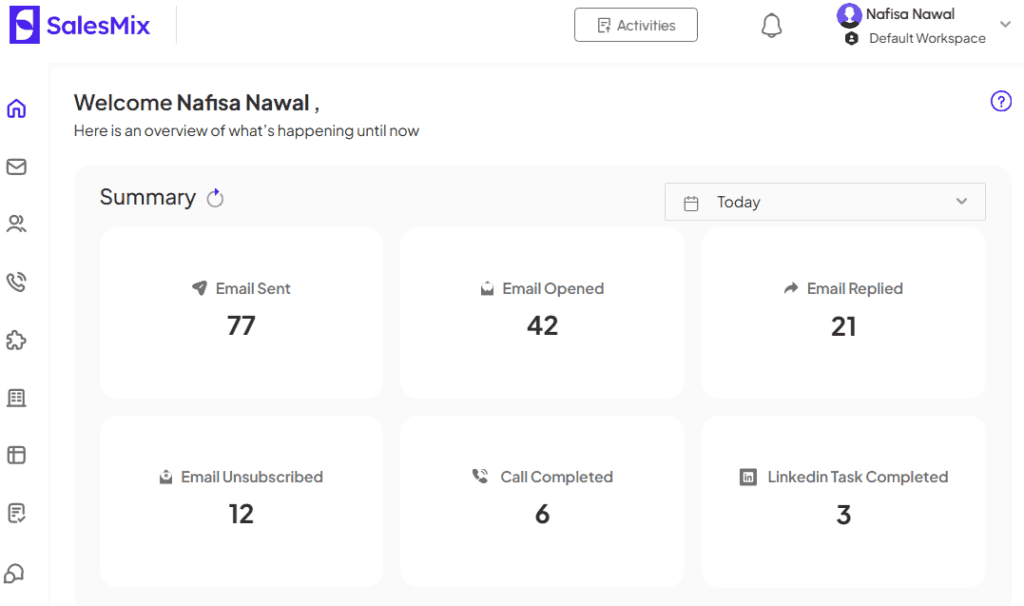
Analyze your cold emails’ performance in SalesMix.
Beyond warming up your email, SalesMix elevates your email campaigns through advanced personalization capabilities. By integrating data from your CSV files, SalesMix allows for dynamic content insertion, such as the recipient’s first name or varying terms for their workplace. This personalized approach helps in avoiding the generic feel of bulk emails and significantly increases engagement rates.
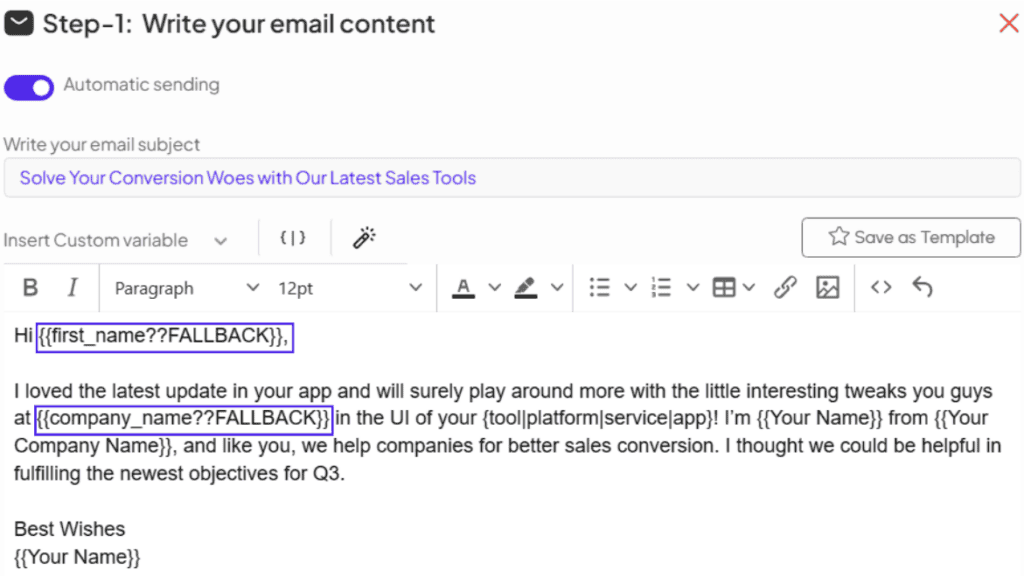
Personalization in SalesMix
It also lets you schedule your emails beforehand to ensure that your emails are sent at the most opportune time, aligning with your recipients’ time zones. It has an additional option to avoid sending emails on US public holidays, which increases the likelihood of your emails being opened. Pre-send testing is also available to confirm that your emails are landing in inboxes rather than spam folders, further optimizing your email strategies.
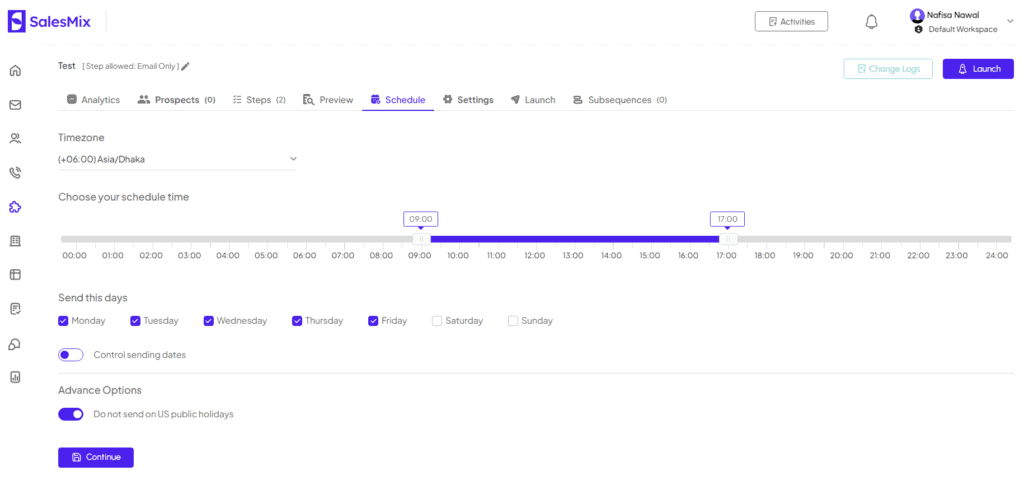
Schedule Cold Emails with SalesMix
Conclusion
As you delve into the intricacies of cold email marketing, understanding and optimizing your cold email response rate becomes paramount. This metric is beyond just a number – it’s a critical insight into how well your cold emailing is performing.
The focus should be on refining your strategies and adopting innovative approaches that align with evolving market dynamics. This strategic outlook can enhance your email campaigns and help you acquire more profitable customers for a long time.

